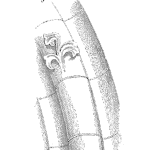
How a customer uses a product matters. It matters in the amount and type of stress your product receives. It determines the life span. Someone that uses the product often isn’t necessarily going to have a short life span, it might be the lack of use that most damages a product.
When working with a team developing a new inkjet printer platform the marketing team creating a profile for five different use profiles. The profile includes pictures of typical users in that group and the surrounds of the new product. One typical user rarely printed, maybe one or twice a month and then generally only a black and white letter.
Another was a small real estate brokerage shop that printed hundreds of flyers a day, nearly every day.
The use profiles did not include details of stress levels or environments, yet did provide sufficient clues to allow the readability team to fill in the gaps in a reasonable manner. The expected failure mechanisms changed as the use profiles differed.
The low use case includes dust and debris build up jamming paper feed mechanisms, whereas the heavy printing use profile generally would fail due to wear out of the print nozzles. Each profile includes specific failure mechanisms stressed uniquely due to the profile.
Your product use profile
Consider the range of uses for your product from a commercial kitchen to a home chef at a vacation home.
Consider the types of stresses involved due to use or no use, due to local conditions and storage and handling. Consider how the product is likely to fail (refer to your FMEA studies, if needed) and focus on how the unique use profile will lead to failures.
If necessary, talk to your marketing and sales folks to get a sense of how and how often you customers uses your product. Get pictures, get stories, get typical storage and use locations. Get the information you need to understand how your customers use your product. Generally there are more than one way and not always the worst case, heavy use, demanding environment will lead to the most common failures.
The environmental conditions and use profiles are similar and related, yet understanding the use profiles allow you to refine the environmental conditions to specific groups of expected users. Be sure to consider the impact of use conditions that include extended storage or frequent transportation conditions. The environmental conditions vary around the world, yet may dramatically change among your use profiles, too.
In a reliability definition the environmental element depends on the use profile.
In a short reliability definition, keep it short. In other words, summarize to capture the typical use profile. In another document define the range of use profiles and associated stresses and environments.
Leave a Reply